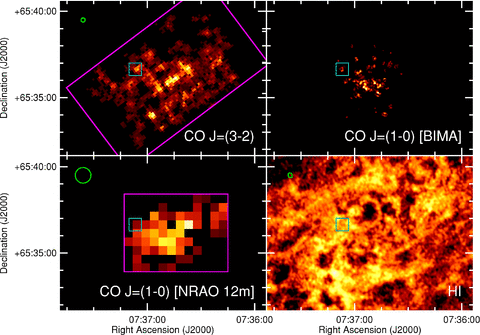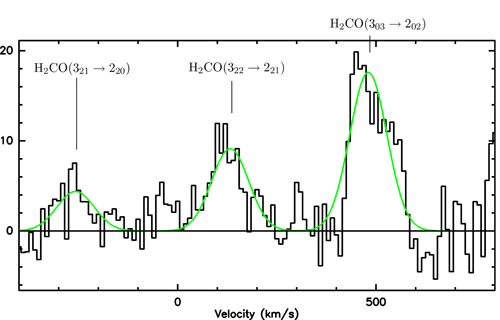Introduction
Dense molecular gas is considered to be a prerequisite of star formation, one of the fundamental processes that govern galaxy evolution. There is increasing evidence that the properties of the molecular gas may have an influence on the initial mass function of the stars that will form out of it. Thus, it is important to characterize the properties of this component of the interstellar medium in a variety of environments, from the quiet conditions in the disk of our own galaxy to the energy-rich cores of starburst galaxies, AGN and merging galaxies.
The tools to study the properties of molecular gas are spectral lines at centimeter, millimeter and submillimeter wavelengths. They are not absorbed by instellar dust and thus allow to probe deep into the most dust-obscured regions of galaxies. The components and the structure of a molecule govern its reactions to its environment, which in turn determine the strength of the emission in its transition lines, the "fingerprint" of a molecule. Thus, by observing the right transitions of a selected molecule, the ratio of the strength of the emission lines allow the determination of specific properties of the molecular gas like its density or kinetic temperature. Fully-sampled maps of spectral line emission, obtained either by interferometric observations or assembled by raster mapping at single-dish telescopes, provide not only a wealth of information about the physical conditions of the molecular gas, but also trace its kinematics.
Research at JIVE

The JCMT Nearby Galaxies Legacy Survey (NGLS) investigates the molecular gas and dust content of galaxies within 25Mpc, including galaxies in the Virgo cluster as well as in the field. Maps of the CO(3-2) transition observed with the new HARP-B receiver at the JCMT are compared to those of the CO(1-0) transitions and tracers of other component of the interstellar medium like the atomic gas (HI). The CO data not only trace the distribution and kinematics of the molecular gas, but also allow an estimate of its mass and physical properties. The figure above shows maps of the inner 12 arcmin x 9 arcmin of NGC2403 in different line transitions as an example. (For details, please refer to Bendo et al. 2010 MNRAS 402, 1409.)
In addition to spectral line studies using traditional tracer molecules, researchers at JIVE also explore and exploit the diagnostic power of molecular tracers that are not yet commonly used. The spectrum below shows emission from three different transitions of formaldehyde (H2CO), taken towards a lobe of the circumnuclear ring of the nearby starburst galaxy M82. The intensity ratio of the two outer lines provide an estimate of the kinetic temperature of the molecular gas, while ratios including the middle line trace the density of the gas. The fact that all three lines are observed in the same spectrum minimizes the observational uncertainties. (For details, please see Mühle et al. 2007, ApJ 671, 1579.)

Contact
Questions about molecular gas research at JIVE should be directed to Stefanie Mühle.
